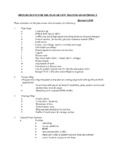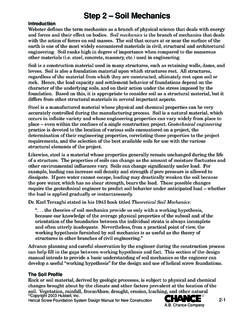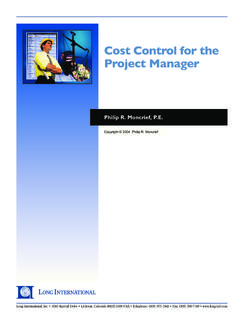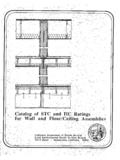Transcription of Improving Construction Productivity on Alberta …
1 Improving Construction Productivity on Alberta Oil and Gas Capital Projects A report submitted to: Alberta Finance and Enterprise Prepared by: Dr. George Jergeas PEng Professor of Project Management Department of Civil Engineering Schulich School of Engineering University of Calgary Alberta , Canada May 2009 1 MANDATE Alberta Finance and Enterprise is proceeding on the Minister s mandate to develop policies, initiatives and tools to help Alberta s businesses improve their Productivity and global competitiveness. Alberta Finance and Enterprise is establishing Productivity Inc, an Alberta umbrella program, whose purpose is to take Productivity , innovation and strategic competitiveness to new levels of awareness and application.
2 Alberta Finance and Enterprise has developed a set of broad guiding principles that provide direction for Productivity Inc. These principles are based on a collaborative network approach among clients and stakeholders including Alberta Finance and Enterprise, Alberta -based Construction industry, industry associations, community-based economic development agencies and post secondary educational institutions (Albertan, national and international) to develop and establish a Productivity framework for Alberta . Alberta Finance and Enterprise has engaged Professor George Jergeas PEng of the Schulich School of Engineering at the University of Calgary to: 1. Determine the Productivity improvement needs and identify factors affecting Construction Productivity in the delivery of oil and gas capital projects.
3 2. Categorize and prioritize these Productivity factors. 3. Determine gaps in available Construction Productivity literature and programs, services and information. The report following which is formatted in a journal style describes the approach taken and the findings of the study. 2 Improving Construction Productivity on Alberta Oil and Gas Capital Projects Dr. George Jergeas PEng Abstract The current global economic situation and its negative impact on major oil and gas capital projects in Alberta have made Construction Productivity improvement more and more important. This paper describes the findings of an ongoing research project, presents the most critical aspects that can improve Productivity in the delivery of oil and gas Construction projects of Alberta .
4 In this study, we have surveyed very experienced personnel from owner organizations, EPC firms and Construction contractors to identify factors for Improving Productivity on future Construction projects. Industry recommendations for Improving Construction Productivity are categorized and tabulated into 10 major areas. These areas are labour management, project front-end planning (loading) and workface planning, management of Construction and support, constructability in engineering design, engineering management, communication, contractual strategy and contractor selection, government influence and modularization, prefabrication, pre-build in shops. Introduction The statistics for major Alberta Construction projects illustrates that in 2006, $ billion was spent on Construction projects.
5 In five years (2002-2007), Construction projects in the oil and gas sector alone were worth $ billion ( Alberta Economic Development, 2007). Although the Construction industry represents a substantial portion of Alberta s as well as Canada s economy, the performance and improvement in Construction Productivity over the past 20 years has been declining (Choy, 2004). The decline in Alberta is consistent with the decline of Construction Productivity in North America over the past three decades. The decline has been reported by many researchers such as (Business Roundtable (BRT), 1989; Dozzi and AbouRizk, 1993; Hewage and Ruwanpura, 2006; Sharpe, 2006). There are undue cost overruns, delays and loss of Productivity associated with the delivery of major capital Construction projects everywhere.
6 Many researchers and practitioners have identified poor management practices that lead to poor performance such as scope changes, design errors and omissions, lack of proper planning and scheduling, improper management of tools, equipment, materials, and labour among many other factors. These researchers and practitioners have tried to overcome these challenges by providing their insights and recommendations, but these recommendations have yet to be implemented with tangible Productivity and project predictability improvement. In addition to the literature search, the author conducted a survey of the opinion of industry professionals and found that a combination of labour issues, project planning, engineering management, leadership, constructability among other issues are the main areas for Construction 3productivity improvement.
7 A summary of a literature search and the industry survey findings are presented in the sections and subsections following. Literature Search This section provides a limited literature review of recent publications relating to Construction Productivity . Researchers and practitioners around the world have provided several contributions related to Improving the various aspects of Construction Productivity . Research is being performed world-wide in research centres on many areas related to Construction Productivity . These research centres include industry associations and academic institutions in Australia, Canada, United Kingdom, and the United States of America. In Australia research work related to factors affecting Productivity such as rework and worker s performance and motivation was performed by Edwards and Love (Edwards et al.)
8 2007; Love et al. 2005). In Canada, Productivity Alberta in 2008 indicated that Construction Productivity largely depends on the performance of Construction workers. The labour force plays a vital role in the Construction process. The improvement in Construction Productivity needs to be achieved through greater resource allocation and human resource efficiency, effectiveness and engagement; increased innovation and technology diffusion. Productivity Alberta also indicated that Improving Productivity and innovation is not necessarily expensive, time-consuming, or overly difficult. However, it takes a commitment to identifying areas for improvement, working toward the improvement, and maintaining the improvements over time.
9 ( Productivity Alberta , 2008) The post secondary institutions in Canada such as the Universities of Alberta , Calgary and Concordia are actively performing research work on Construction Productivity improvement in partnership with major Canadian Construction companies. Research performed by the University of Alberta indicated that Productivity is a complex issue as many factors influence Productivity such as labour, capital, material and equipment. Lack of right materials, tools and equipments, poor communication or relationship between workers and management, disorganized projects, poor supervision, lack of cooperation and communication between different crafts, lack of worker participation in decision making process, and unfair workloads are the some of the factors that affect Productivity .
10 Technical problems like inadequate designs or incomplete engineering work can also lead to backlog in Productivity . Similarly restrictive and redundant procedures also affect the effectiveness of a project (Dozzi and Abourizk, 1993). University of Calgary research identified the relative importance of 51 Productivity factors which were classified into three groups: Human, External, and Management. The following are the Productivity factors identified by Liberda et al. (2003). 4 Human factors such as worker motivation, worker boredom and fatigue, worker attitude and morale, worker s physical limitations, worker absenteeism, worker learning curve, worker experience, and worker skills as well as the team spirit of crew.
















